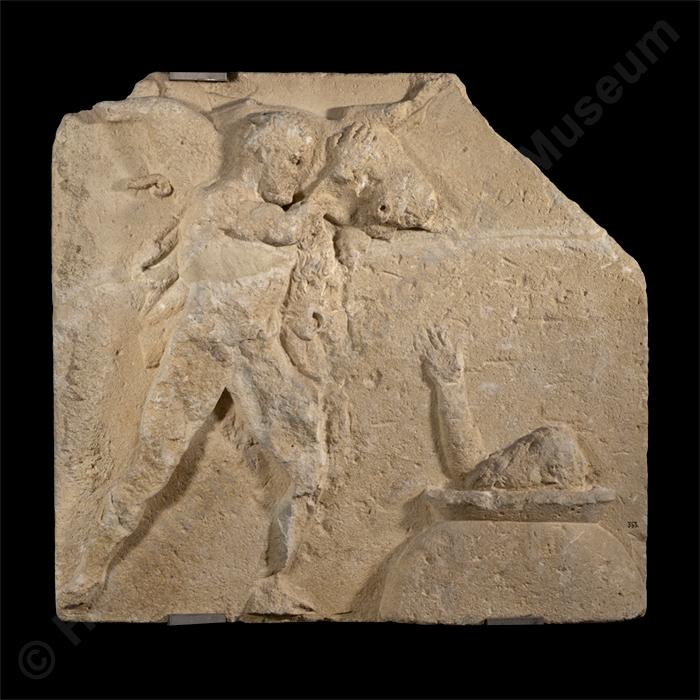Metope of Herakles and Eurystheus
Γ363
Poros stone
Mended from two pieces. Upper corners broken, much chipping on relief
Length: 74 cm. Height: 69 cm.
Knossos
Found reused as a cover of a Roman duct near the Villa Ariadne
Classical period:
450-425 BC:
Gallery:
XXVICase:
Not in caseExhibition thematic unit:
Sculpture. Archaic period (7th-6th c. BC). Classical period (5th-4th c. BC)Description
Metope from the frieze of a Doric temple, depicting the conclusion of the fourth labour of Herakles. The hero is shown in a wide stride to the right, his lionskin and club over his left shoulder, carrying the Erymanthian Boar (captured alive, according to the myth) upside-down, ready to deliver it to the Mycenaean King Eurystheus. The terrified king, hiding in a pithos, is raising his hands, imploring him to keep away. This is a work of excellent quality in both conception and execution, although it reproduces a well-known iconographic theme. It has recently been proposed that it is a votive relief, a view requiring further evidence. The theory that it comes from a large, as-yet-unidentified Doric temple of Knossos remains plausible and more attractive.Bibliography:
G. Karo, "Archäologische Funde im Jahre 1910: Griechenland", Archäologischen Anzeiger 1910, 150. S. Benton, "Herakles and Eurystheus at Knossos", Journal of Hellenic Studies 57 (1937), 38-43. Lexicon Iconographicum Mythologiae Classicae V (1990) 45, no. 2121, s.v. Herakles (contribution by F. Felten). K. Sporn, Heiligtümer und Kulte Kretas in klassischer und hellenistischer Zeit, Heidelberg 2002, 122-123, nn. 823-824, 350.Author:
K. S.Photographs' metadata
